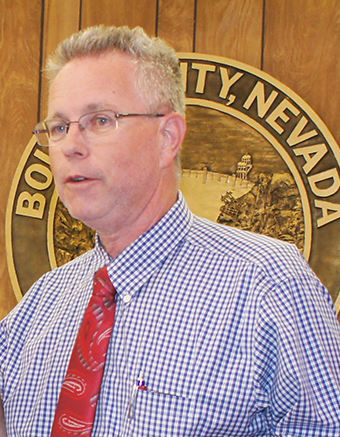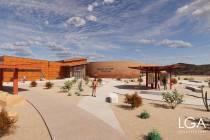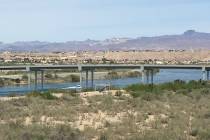Rural justices of the peace upset over proposed pay hike formula


Justices of the peace from outlying Clark County communities objected Tuesday to what they called a break with a more-than-decadelong practice of tying their base salaries to a percentage of what their counterparts in Las Vegas, North Las Vegas and Henderson earn.
Moapa Valley Township Justice of the Peace Lanny Waite told county officials Tuesday he was dismayed watching a recording of the last County Commission meeting, at which he saw what he called a “less than flattering” portrayal of the courts in outlying areas of the county.
An original proposal called for a 4 percent across-the-board increase for justices of the peace, but an amendment changed that to a 6.7 percent increase for the justices in the county’s three biggest cities.
Establishing a set ratio for the outlying areas meant the two sides could avoid protracted fights about the issue, Waite contended.
“It will be a return to the acrimonious debate long since resolved,” Waite said. “It will be a giant step back.”
At the July 19 meeting, commissioners established an annual salary of $163,752 for justices of the peace in Las Vegas, North Las Vegas and Henderson, effective Jan. 2. They asked for further review of the outlying jurisdictions before this week’s meeting.
Since 2003, the base salary for justices of the peace in outlying communities has been 40 percent of the base salaries of what their counterparts in the three big cities earn, with the exception of Laughlin, where it’s 65 percent.
The outlying justices asked in 2003 for their base salaries to be tied to the justices in the largest jurisdictions, and the commission granted that request.
The ratio remained the same when the commission again increased salaries in 2008, but county officials said there isn’t a formal policy linking the base salaries to a specific ratio.
Waite told county officials he was “vehemently” opposed to changing the ratio.
Because the new salaries wouldn’t take effect until early 2017, commissioners directed county staff to create a work group to look at the salaries for the outlying areas in more detail compared with caseloads and a variety of other factors, before settling on specific figures.
Hiking the base salaries for the justices of the peace in the eight other jurisdictions by the same percentage as the approved more than 6 percent increases for Henderson, Las Vegas and North Las Vegas would amount to between $10,000 and $15,000 more for the county annually.
In fiscal year 2015, there were 18,103 cases filed per justice of the peace position in the Las Vegas Justice Court, compared with 7,702 in Laughlin, 5,000 in Henderson, 3,351 in Searchlight, 1,322 in Boulder City and 905 in Moapa Valley. Las Vegas has 14 positions, Henderson and North Las Vegas each have three, and the other eight jurisdictions each have one. Those figures include civil, criminal and traffic cases.
The salary increase for justices of the peace that took effect in 2008 gave justices in outlying communities a base salary of $61,380, which is 40 percent of what justices in the biggest jurisdictions received: $153,449. In Moapa Valley, Boulder City and Mesquite, that was $73,303 because those justices of the peace receive additional compensation for hearing juvenile cases.
The exception is Laughlin, where the 2008 salary was $99,742 because of the workload there.
Boulder City Justice of the Peace Victor Miller told commissioners Tuesday the justices in the smaller communities are available 24/7 as judges. There’s also administrative work after the courthouse closes, and judges are on call “until the court opens the next day,” Miller said.
“We’re more of an around-the-clock operation,” Miller told commissioners.
Contact Jamie Munks at jmunks@reviewjournal.com or 702-383-0340. Find @JamieMunksRJ on Twitter.


















